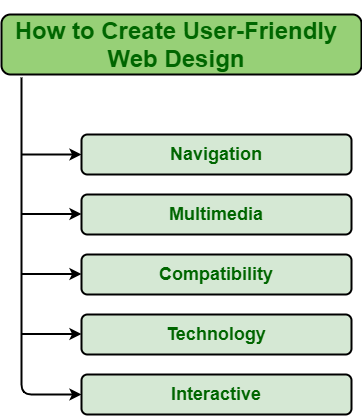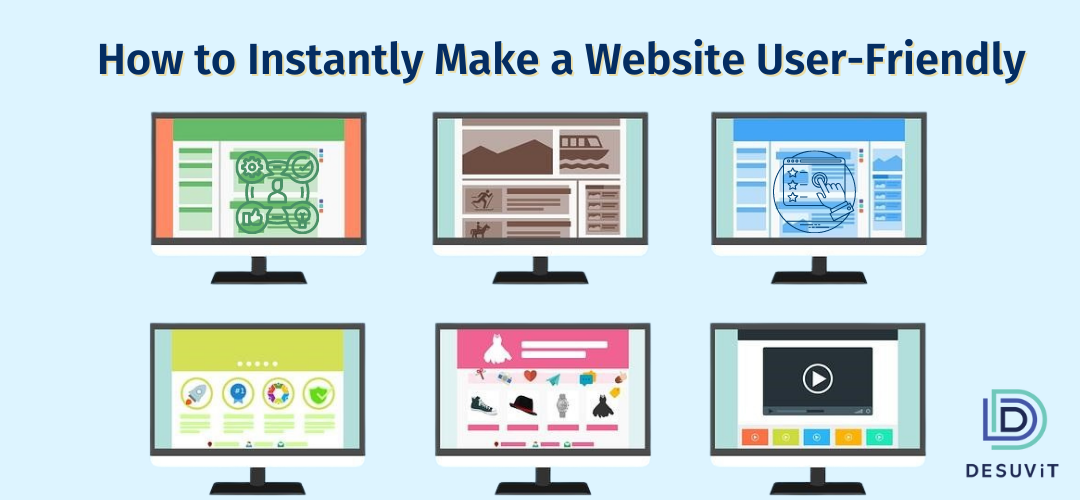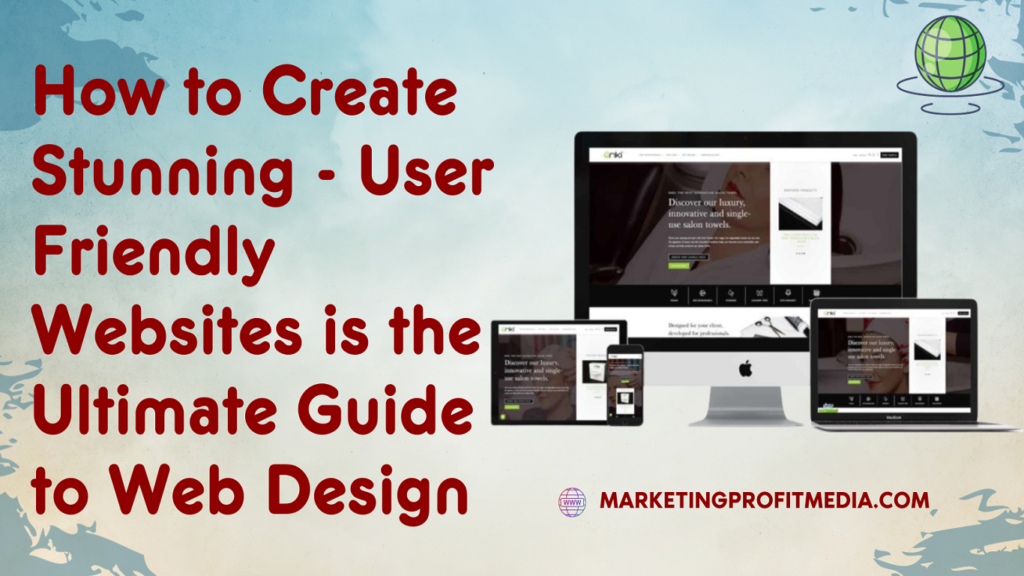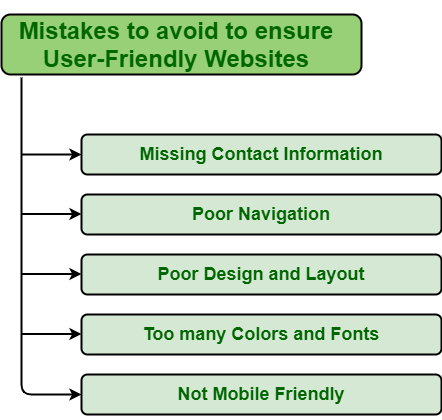AI GameZone OTO: Access the links to all AI GameZone pages to explore detailed information. AI GameZone includes a single front-end and nine AI GameZone OTO editions. Benefit from the early bird discount offered for all AI GameZone versions, along with AI GameZone OTO hot bonuses valued at $40k. These AI GameZone OTOs are created by Pallab.
Note: Buy Front-End before OTOs to work well. you can buy FE or OTOs from the Locked link below
Creating a user-friendly website can often seem like a daunting task, especially if you lack technical expertise. However, fear not! In this article, we will guide you through the process of building a website that is both visually appealing and easy to navigate, all without the need for any technical skills. So, if you’ve been wanting to create your own website but felt overwhelmed by the technical jargon, sit back, relax, and let us show you just how simple it can be.
Choose a user-friendly website builder
Building a website can seem like a daunting task, especially if you don’t have any technical expertise. Thankfully, there are user-friendly website builders available that can simplify the process for you. When choosing a website builder, there are a few key factors to consider: researching various options, ease of use, available features, and user reviews and ratings.
Research various website builders
Before making a decision on which website builder to use, it’s important to do thorough research. Look into different platforms and compare their features, pricing plans, and customer support options. This will give you a better understanding of what each website builder has to offer.
Consider ease of use
One of the most important aspects of a user-friendly website builder is ease of use. As someone without technical expertise, you want a platform that is intuitive and easy to navigate. Look for builders that offer drag-and-drop functionality, as this allows you to easily move elements around on your website without any coding knowledge.
Explore available features
Different website builders offer different features, so it’s essential to explore what each platform has to offer. Look for features such as customizable templates, e-commerce integration, blogging capabilities, and SEO tools. Consider which features are essential for your website and choose a builder that provides those options.
Read user reviews and ratings
User reviews and ratings can provide valuable insights into the experience of using a particular website builder. Take the time to read reviews and see what other users have to say about the platform. Look for feedback on ease of use, customer support, and overall satisfaction. This will help you make an informed decision when selecting a website builder.
Opt for pre-designed website templates
Once you have chosen a user-friendly website builder, it’s time to select a template for your website. Pre-designed templates can save you a lot of time and effort, as they already have a professionally designed layout and structure. Here are a few steps to help you find and customize the perfect template for your website’s purpose.
Browse template libraries
Most website builders have vast libraries of templates to choose from. Take the time to browse through these libraries and explore the different options available to you. Consider the overall design, color schemes, and layout of each template.
Select a template that suits your website’s purpose
When choosing a template, keep in mind the purpose of your website. Are you creating a portfolio website, a blog, or an e-commerce site? Select a template that aligns with the goals and aesthetics of your website. For example, if you’re creating an online store, look for templates that have built-in e-commerce features.
Customize the chosen template according to your needs
Once you have selected a template, it’s time to customize it according to your specific needs. Most website builders allow you to easily customize templates by changing colors, fonts, and adding or removing sections. Make sure to tailor the template to match your brand’s identity and preferences.
Prioritize intuitive navigation
An essential aspect of creating a user-friendly website is ensuring intuitive navigation. Your visitors should be able to easily navigate through your website and find the information they’re looking for. Here are some tips to help you achieve intuitive navigation.
Organize your content logically
Before creating your website’s navigation, organize your content logically. Divide your content into relevant sections and think about the hierarchy of information. This will help you create a clear and organized structure for your website.
Create clear and concise menus
Menus are the primary way visitors navigate through your website, so it’s essential to create clear and concise menu items. Use straightforward language and avoid jargon or ambiguous terms. Make sure the menu items accurately represent the content of the pages they link to.
Ensure consistent navigation across all pages
Consistency is key when it comes to website navigation. Use the same menu layout and styling across all pages to avoid confusion. Users should be able to easily navigate from one page to another without having to relearn how the navigation works.
Use descriptive labels for menu items
Descriptive labels for menu items make it easier for visitors to understand what each page contains. Instead of using generic labels like “Services” or “Products,” be more specific. For example, use “Web Design Services” or “Product Catalog.”
Implement search functionality
Adding a search function to your website can greatly enhance its usability. Users can simply type in keywords to find specific information or products. Make sure your search function is prominently placed and easily accessible from any page.
Simplify the design and layout
A clean and uncluttered design can significantly contribute to a user-friendly website. Here are some tips to help you simplify the design and layout of your website.
Choose a clean and uncluttered design
A clean design with ample white space can make your website more visually appealing and easier to navigate. Avoid cluttering your pages with too many elements or excessive text. Keep your design simple and focused on the key messages you want to deliver.
Optimize website loading speed
Website loading speed plays a crucial role in user experience. A slow-loading website can frustrate visitors and lead to high bounce rates. Optimize your website’s loading speed by minimizing file sizes, compressing images, and choosing a reliable hosting provider.
Use white space effectively
White space, also known as negative space, is the empty space between elements on a webpage. Use white space effectively to create a sense of visual balance and clarity. It helps draw attention to important elements and improves readability.
Implement responsive design for different devices
With the increasing use of mobile devices, it’s essential to ensure your website is responsive and mobile-friendly. Responsive design allows your website to adapt to different screen sizes and provide an optimal user experience across all devices.
Maintain visual consistency
Consistency in design elements such as colors, fonts, and typography is essential for a user-friendly website. Choose a color palette that aligns with your brand and use consistent fonts and typography throughout your website. This creates a cohesive visual experience for your visitors.
Pay attention to typography
Typography plays a vital role in the readability and overall aesthetics of your website. Here are some key considerations for selecting and implementing typography.
Select readable fonts
Choose fonts that are easy to read across different devices and screen sizes. Avoid overly decorative or fancy fonts that can make the text difficult to decipher. Stick with clean and legible fonts for the body text, and consider using a more unique font for headings or logos.
Use appropriate font sizes
Font size is crucial for readability. Ensure your body text is large enough to be easily read, especially on mobile devices. Headings should also have a larger font size to provide visual hierarchy and make them stand out.
Ensure proper line spacing
Line spacing, also known as leading, refers to the space between lines of text. Proper line spacing can greatly enhance readability. Avoid overcrowded paragraphs by increasing the line spacing slightly, making it easier for readers to follow along.
Implement proper contrast between text and background
Text should have sufficient contrast with the background to ensure readability. Avoid using light-colored text on a light background or dark text on a dark background. Make sure the contrast is strong enough for comfortable reading.
Avoid excessive use of decorative fonts
While decorative fonts can add personality to your website, it’s essential to use them sparingly. Excessive use of decorative fonts can make your website appear unprofessional and can make reading more challenging.
Embed multimedia elements strategically
Multimedia elements such as images and videos can enhance the user experience on your website. Here are some tips for embedding multimedia elements strategically.
Add relevant images and videos
Choose high-quality images and videos that are relevant to your content. Visual elements can help convey your message effectively and capture the attention of your visitors. Use images and videos that complement your text and engage your audience.
Optimize multimedia files for the web
Large file sizes can significantly slow down your website’s loading speed. Optimize your images and videos by compressing their file sizes without compromising the quality. This will ensure faster loading times and a better user experience.
Ensure proper alignment and placement
Pay attention to the alignment and placement of your multimedia elements. Align images and videos with the surrounding text or other elements to create a visually appealing layout. Proper placement enhances the overall aesthetics of your website and improves its usability.
Use captions and alt text for accessibility
Adding captions to your videos and alt text to your images is essential for accessibility. Captions provide a text alternative for video content, making it accessible to users who are deaf or hard of hearing. Alt text describes images to users who may be visually impaired or using screen readers.
Optimize website for search engines
Creating a user-friendly website goes hand in hand with optimizing it for search engines. Here are some tips to help improve your website’s visibility in search engine results.
Research relevant keywords
Keywords are the terms and phrases people use when searching for information online. Research relevant keywords in your industry and incorporate them naturally into your content. This will help search engines understand what your website is about and drive targeted traffic.
Optimize page titles and meta descriptions
Page titles and meta descriptions are the snippets that appear in search engine results. Writing compelling page titles and meta descriptions that accurately describe your content can improve your website’s click-through rate. Incorporate relevant keywords in these elements to further boost your visibility.
Provide clear and concise page URLs
URLs play a role in both search engine optimization (SEO) and usability. Use clear and concise URLs that accurately reflect the content of each page. Avoid long, convoluted URLs with unnecessary characters or numbers.
Utilize heading tags correctly
Heading tags (H1, H2, H3, etc.) provide structure to your content and help search engines understand the hierarchy of information on your website. Use heading tags correctly, starting with a single H1 tag for the main title and subsequent tags for subheadings.
Incorporate internal linking
Internal linking, or linking between pages within your own website, is essential for both user experience and SEO. It helps visitors navigate through your website and allows search engines to discover and index your content more effectively. Include relevant internal links whenever it adds value to your content.
Include clear and concise content
The content on your website plays a crucial role in providing value to your visitors. Here are some tips for creating clear and concise content.
Write in a simple and straightforward language
Avoid using technical jargon or complex language that may confuse your visitors. Write in a simple and straightforward language that is easy to understand. Use plain language to convey your message clearly.
Break down information into sections
Breaking down your content into sections and paragraphs makes it easier for users to scan and find the information they need. Use headings, subheadings, bullet points, and numbered lists to organize your content into digestible chunks.
Use bullet points and subheadings
Bullet points and subheadings help break up the text and make it more scannable. Use bulleted lists to highlight key points and subheadings to introduce new sections or topics. This improves readability and allows users to find information quickly.
Ensure proper grammar and spelling
Correct grammar and spelling are essential for creating a professional and trustworthy website. Proofread your content for any grammatical errors or spelling mistakes. If needed, use grammar-checking tools or have someone else review your content.
Ensure accessibility for all users
Making your website accessible to all users, regardless of disabilities or impairments, is crucial for a user-friendly experience. Here are some key considerations for ensuring accessibility.
Implement alt text for visuals
Adding alt text to images allows users with visual impairments or those using screen readers to understand the content of the image. Write descriptive alt text that accurately describes the image and its purpose.
Provide closed captions for videos
Closed captions provide a text version of the audio in a video. They are essential for users who are deaf or hard of hearing. Make sure to provide closed captions for any videos on your website.
Make navigation and controls accessible
Ensure that the navigation and controls on your website are accessible to all users. Use clear labels and provide keyboard accessibility. Test your website’s navigation and controls using a keyboard-only navigation to ensure usability.
Consider colorblindness and visual impairments
Colorblindness and visual impairments can affect how users perceive your website. Choose color palettes that provide sufficient contrast and avoid relying solely on color to convey information. Use descriptive text or symbols in addition to color to communicate effectively.
Regularly test and optimize your website
Creating a user-friendly website is an ongoing process. It’s crucial to regularly test and optimize your website based on user feedback and analytics. Here are some steps to help you continuously improve your website’s user-friendliness.
Perform usability testing
Usability testing involves observing real users as they interact with your website. This can help identify any usability issues or areas for improvement. Gather feedback from users and make note of any pain points or confusion they encounter.
Gather feedback from users
Feedback from users plays a vital role in identifying any areas for improvement. Provide users with an avenue to offer feedback, such as a contact form or feedback survey. Analyze this feedback and use it to guide your website improvement efforts.
Track website analytics
Website analytics provide valuable insights into user behavior and engagement on your website. Track metrics such as page views, bounce rate, and time on site to understand how users interact with your website. Use this data to identify areas that need optimization.
Make necessary improvements and updates
Based on usability testing results, user feedback, and website analytics, make necessary improvements and updates to your website. Address any usability issues, optimize page loading speed, and implement any suggested enhancements. Regular updates ensure your website remains user-friendly and up to date.
In conclusion, creating a user-friendly website without technical expertise is achievable with the right tools and considerations. Choose a user-friendly website builder, opt for pre-designed templates, prioritize intuitive navigation, simplify the design and layout, pay attention to typography, embed multimedia elements strategically, optimize for search engines, include clear and concise content, ensure accessibility for all users, and regularly test and optimize your website. By following these guidelines and continuously improving your website, you can create a user-friendly experience that engages your visitors and helps achieve your goals.




